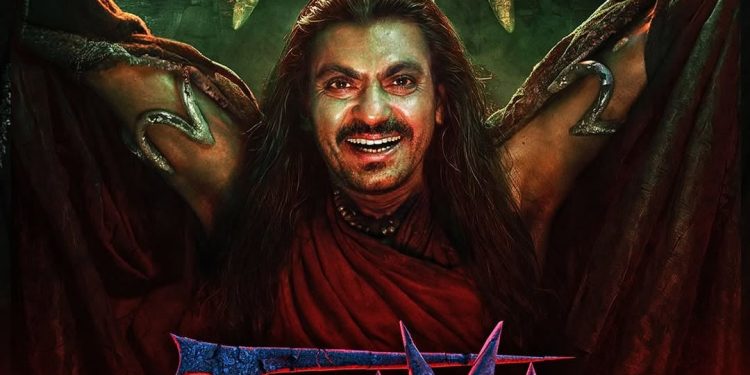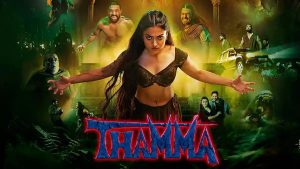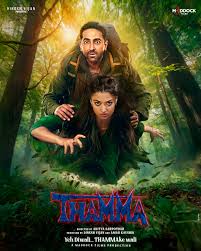The film *Thamma*, part of the Maddock Horror Comedy Universe (MHCU), continues to build momentum, following the success of its predecessor, *Munjya*. Directed by Aditya Sarpotdar, the film has quickly become another hit for the franchise. In an exclusive two-part interview with Mayur Sanap of Rediff, Sarpotdar opens up about his journey with MHCU, the challenges of blending multiple genres, and how he reimagined the vampire myth in an Indian context. Success of Thamma and Future Plans for the MHCU
Success of Thamma and Future Plans for the MHCU
When asked about the reception of Thamma, Sarpotdar expressed immense satisfaction, noting the hard work that went into the film and how it resonated with audiences. He emphasized the film’s goal of creating a communal experience in theaters, especially for families during Diwali. He added that the broad appeal of the movie—entertaining kids, adults, and all age groups—was heartwarming.
Sarpotdar highlighted the unique blend of genres in Thamma, combining horror, comedy, and romance. He shared how the challenge lay in maintaining a balance between these themes, but the focus was always on crafting a heartfelt romance at the core of the film. “It was a romantic film first,” Sarpotdar explained.
“It was a romantic film first,” Sarpotdar explained.
“The story revolves around the relationship between the lead characters. Beyond that, it had to have elements of comedy and thrill because we were working within the horror-comedy universe.”
Building the Universe: Challenges and Creative Decisions
For Sarpotdar, one of the most exciting aspects of Thamma was how it fit into the broader MHCU. While previous films, including Stree 2, featured cameos that hinted at a shared universe, Thamma marks a more direct connection, building on elements from other films.
“The most challenging part was integrating multiple storylines from different movies into this one,” Sarpotdar admitted.
“We always knew we wanted to push the universe forward, and *Thamma* really brought it all together.”
From Munjya to Thamma: The Journey
Sarpotdar revealed that Thamma was always intended to be part of his directorial journey. After Munjya, his first hit in the MHCU, Sarpotdar was approached by his producer with the idea of exploring a vampire-themed film. The project initially began as a small concept, but as the success of Munjya and Stree 2 gave the team confidence, the film evolved into a larger narrative tied to the MHCU.
“Initially, it was just a standalone film, but as we developed it, we realized the potential to connect it with Bhediya and other characters in the universe. That’s when things started to get really interesting,” he said.
A Name Change and the Power of Numerology
The film’s title underwent several changes before settling on Thamma. Initially announced as Vampires of Vijaynagar, the title was later changed to Thama and finally to Thamma with a double “M”. Sarpotdar clarified that this decision was driven by the producer’s belief in numerology, a factor that also influenced the name of the production company, Maddock, with its double “D”.
Reimagining Vampires for an Indian Audience
When discussing the creative process behind Thamma, Sarpotdar compared the film’s vampires to the typical Western interpretations of the myth. He explained how the film took inspiration from Indian folklore, particularly the concept of the Betaal, a blood-sucking entity from Eastern Indian mythology. Unlike Western vampires, who are tied to cold, dark environments, the Betaal concept was more suited to India’s tropical climate.
“In Zombivli, we made zombies more relatable to the Indian audience by setting the outbreak in a local, familiar environment. Similarly, in Thamma, we drew inspiration from the Betaal rather than the traditional vampire,” Sarpotdar said.
“The Betaal concept is much more aligned with Indian mythology, and it allowed us to create something unique while still keeping the essence of a vampire-like figure.”
Coincidence with Malayalam Film Lokah?
Sarpotdar was asked about the thematic similarities between Thamma and the Malayalam film Lokah, which also features vampire-like characters. He dismissed any notion of copying, explaining that while both films dealt with similar supernatural beings, they were distinct in style and genre.
“Yes, both films feature vampire-like creatures, but Thamma leans more into Indian mythology with the Betaal concept, while Lokah sticks more to traditional Western vampire tropes. It’s purely a coincidence that two films with similar themes came out so close to each other,” Sarpotdar stated. “Our film is a family-oriented comedy, while *Lokah* is a superhero, drama-centric film, so they cater to very different audiences.”
Conclusion
With Thamma continuing to captivate audiences, Aditya Sarpotdar remains committed to pushing the boundaries of the Maddock Horror Comedy Universe. As the franchise continues to grow, Sarpotdar’s innovative take on blending Indian mythology with horror-comedy promises even more exciting developments in the future.











Discussion about this post